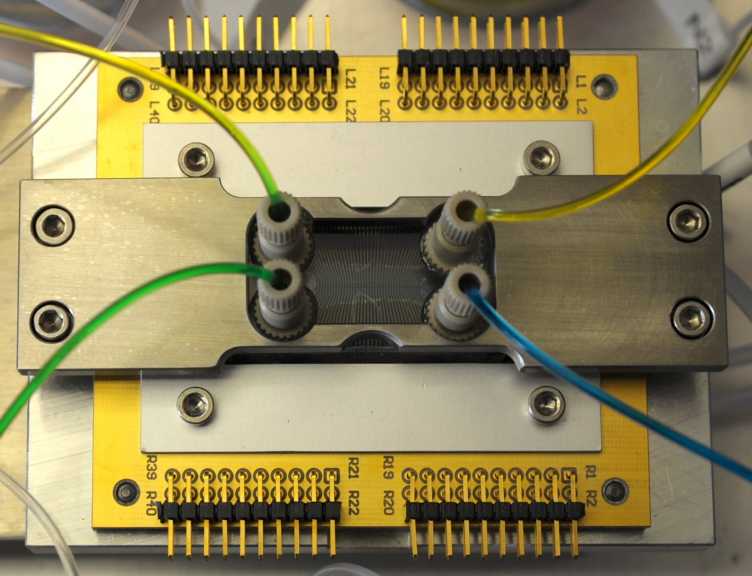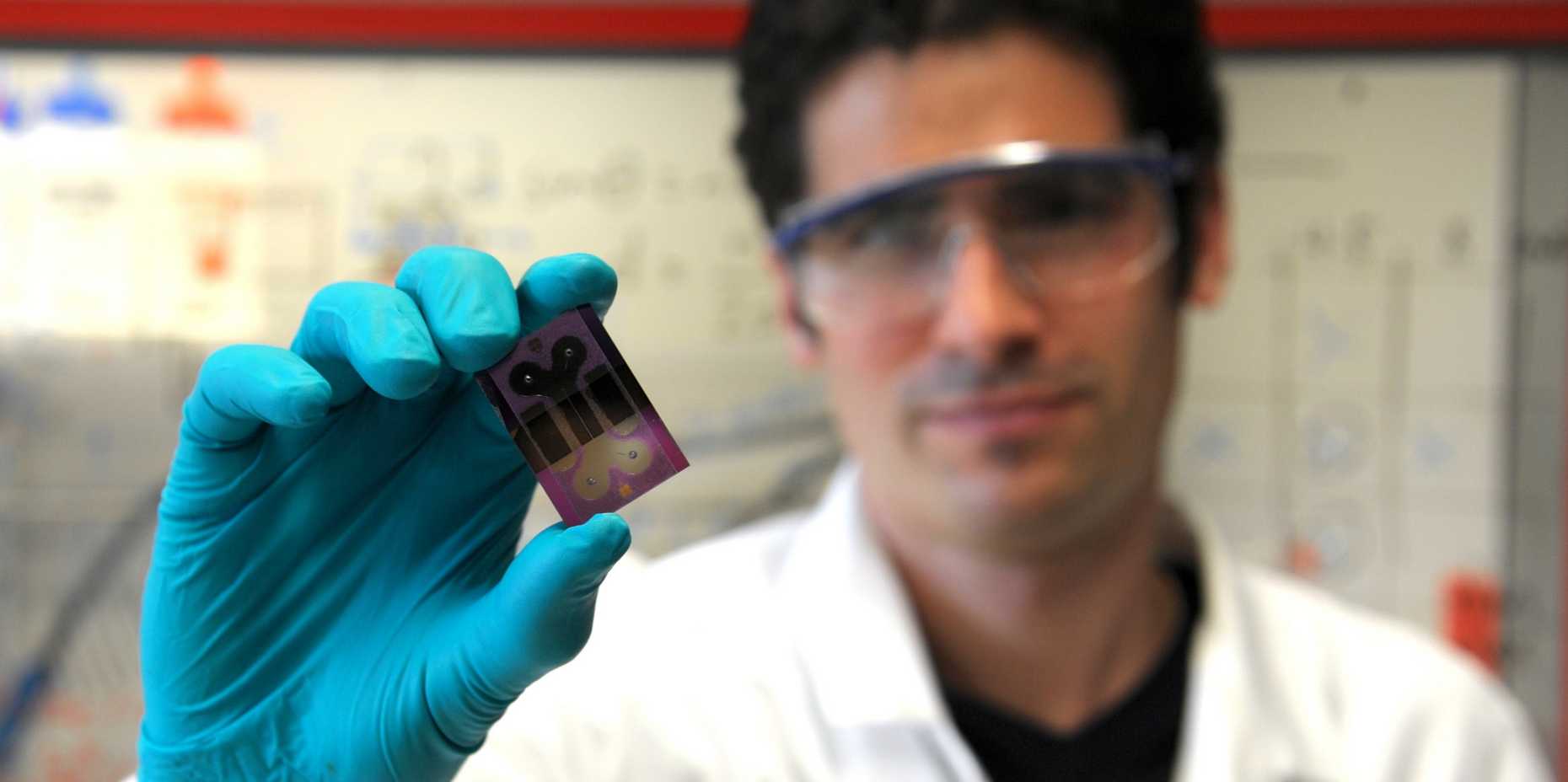‘Electronic bloodstream’ for 3D computer chips
Using a circuit of electrochemically active fluids, scientists are working to develop a method that simultaneously provides electricity and cooling in innovative three-dimensional computer chips. This method was inspired by the structure of the human brain.
It is predicted that the powerful computers of the future will no longer contain two-dimensional chip arrays on boards; instead, they will be made of three-dimensional chip assemblies stacked one upon the other like a deck of cards. The shift towards these kinds of chip stacks is promising because it not only reduces the area of the chip, but also shortens the data links and increases the data bandwidth many times over. However, two challenges hinder the development of complex 3D chips. First, these chips become extremely hot and it is difficult to dissipate the generated heat. Second, conventional electronic connections cannot provide the chip with the required energy.
In close collaboration with and under the guidance of IBM Research Zurich, a team of Swiss scientists – a large number of whom are researchers from ETH Zurich – is taking a novel approach that aims to cool and power these types of 3D chip stacks simultaneously. The researchers took inspiration from the structure of the human brain, which is full of minute vessels that cool and supply energy to the neurons. The brain is about 10,000 times denser and more energy-efficient than today’s best computers.
Chip and power supply in one

Through Aquasar and other joint projects, scientists from IBM and ETH Zurich now have many years of collaborative experience with water-cooled computers. Moreover, in the course of the CMOSAIC project, they have already developed the first test systems for cooling 3D computer chips, in which liquid circulates through the individual layers of the chip stack in hair-like channel structures. In a new project named Repcool, the researchers – including scientists from the Paul Scherrer Institute and the Università della Svizzera italiana (USI) – are attempting to use such liquid circuits to power the computer chips at the same time. No longer serving just as a coolant, an electrolyte solution will flow through the chip like an ‘electronic bloodstream’. Thus, computer chip and power supply virtually merge to form a single unit.
PC-sized supercomputers
The ultimate goal of the project is to develop a PC-sized supercomputer. Today’s supercomputers, which deliver computing power of the magnitude of petaFLOPS (i.e. one quadrillion floating point operations per second), fill an entire classroom. The new technology is expected to reduce their volume to 10 litres. To achieve this, the individual elements of the 3D chip – the processor layers, electrodes, electrolytes and the membranes between the individual layers – must be redesigned drastically.
The individual layers of the stack are about 100 micrometres thick, which is equivalent to the diameter of a human hair. “One of the main challenges of the project is to generate and bring enough electrical power into such a tight space,” explains Dimos Poulikakos, professor of Thermodynamics at ETH Zurich. The power density of the battery-like electrochemical flow cell needs to be increased by more than 10 times compared with what is possible with today’s technology.
“The best of nature and technology combined”
Poulikakos is working closely with Thomas Schmidt, a professor at the Laboratory of Physical Chemistry at ETH Zurich and the Paul Scherrer Institute. Poulikakos’ contribution to the project concerns the optimisation of the flow of the circulating fluid, and the related mass and heat transfer in the circuit; Schmidt’s group deals with the improvement of the electrochemical properties of the flow cell. Michele Parinello, professor of Computational Science at ETH Zurich and the USI, researches materials at the molecular level. His contribution to the project is an investigation of which materials will improve the electrochemical reactions at the interface of liquid and chip. At the IBM Research Centre in Rueschlikon, Bruno Michel, head of the Advanced Thermal Packaging research group, is working with his group on the integration of the various systems to build a prototype; the Centre will also test and optimise the individual components and the integrated system.
“If we combine our knowledge of biology with our expertise in chip technology, we will be able to develop efficient and powerful computer systems that combine the best of both nature and technology,” said Michel in an IBM press release.
This text is based on a press release from IBM.

